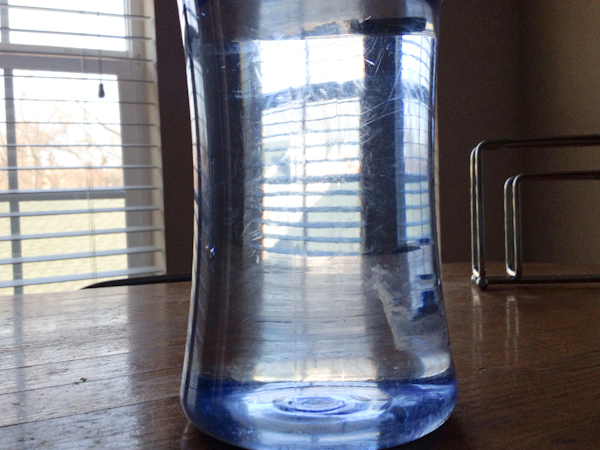Photo by: Nick Conley
Recently, it has come to light that Oklahoma Christian University’s water quality might not be up to par.
In Oklahoma Christian’s water Consumer Confidence Report for 2011, the university was in violation of arsenic as well as two radioactive contaminates. However, the case of arsenic was taken care of and the radioactive contaminates were not serious cases.
“Both of those are naturally occurring,” Shawn Brandt, Compliance Coordinator at the Oklahoma Water Resources Board, said. “We don’t seem to believe that there is any reason for contamination.
Brandt is an environmental specialist in charge of arsenic nitrates, inorganic compounds and volatile compounds.
According to Brandt, Oklahoma Christian is located on the north end of the Garber Wellington Aquifer, which historically has had issues with slightly higher levels of arsenic. This includes Norman, Moore, and some parts of Edmond.
“It is not a shock or unexpected when we see those higher values,” Brandt said.
Drilling the perfect well is more difficult than it sounds. The higher in the ground the well is, the more arsenic in the water, but the lower the well is in the ground, the higher the radioactive contaminate level. Drillers must find the correct depth to perfectly balance the chemicals.
“As far as I know right now, the maintenance department is working on adjusting the level of the well pump down in the ground,” Brandt said.
To receive any negative effect from the levels of arsenic in Oklahoma Christian’s water, one must drink five liters of water a day for 70 years. This would lead to a slightly elevated risk in cancer.
“The general overall water quality in the state of Oklahoma is really high when compared to other states, especially in regards to arsenic,” Brandt said.
Earlier last semester, senior Kelly Ferguson became ill due to unknown reasons. Her roommate, junior Megan Helterbrand, commented on Ferguson’s illness.
“We’re not sure the exact reason she got sick, but the doctors said there was a chance it could have been from the water,” Helterbrand said. “She had an infection and it spread to her lungs.”
Because Helterbrand and Ferguson live in the apartments, which receive water from Edmond, if the water did cause Ferguson’s infection, it likely came from off campus.
“That is city water in the apartments,” Dean of Student Life Neil Arter said. “So we would have to get with the city about that. They would have to notify us if there was any problem with the water they are providing us.”
Junior Rachel Gill lives in Gunn-Henderson Hall.
“When the water comes out of the sink in my room it comes out cloudy and fizzes,” Gill said. “If you let it sit, it will clear up, but it is still scary and not clean water.”
However, Arter has other thoughts on the water.
“We have never had to shut off the water because of the quality of it,” Arter said.
Arter thinks it unlikely that Oklahoma Christian’s water is dangerous.
“Supposedly we are on a pretty good water table here underneath us, and our well is in a good place,” Arter said. “The county health department has those tests just to make sure there is not something wrong. I have never heard of a situation where our water was deemed unsafe.”
However, the university is prepared in the event of a water crisis on campus.
“We have a direct line with the city of Edmond,” Arter said. “We buy water off of them if, for example, in the summer if our water gets too low. If we were ever to have an issue with our well, we would just switch over to Edmond, and students would never know the difference. If we had an issue that the health department deemed unsafe, we would notify the students.”
Although it is unsure if Ferguson became sick because of water, Helterbrand still has opinions about what the campus should do about the water.
“I would like to see them put new water-filtration systems in,” Helterbrand said.
Other students weighed in on the issue as well.
“I use a filter because that way I know my water is clean no matter where I get it from,” Gill said. “It is cheaper and less waste material than water bottles. Having a filtered water bottle puts my mind at ease that the water I am drinking is safe.”
Gill made a suggestion as to what Oklahoma Christian could do to improve the situation.
“We can always use more water fountains around campus, and the ones that have a bottle filter are even nicer,” Gill said.
Although the Consumer Confidence Report for 2012 has not yet been released, students can view past statements of Oklahoma Christian’s water conditions at my.oc services under Water – Consumer Confidence Report for 2011.













Be First to Comment